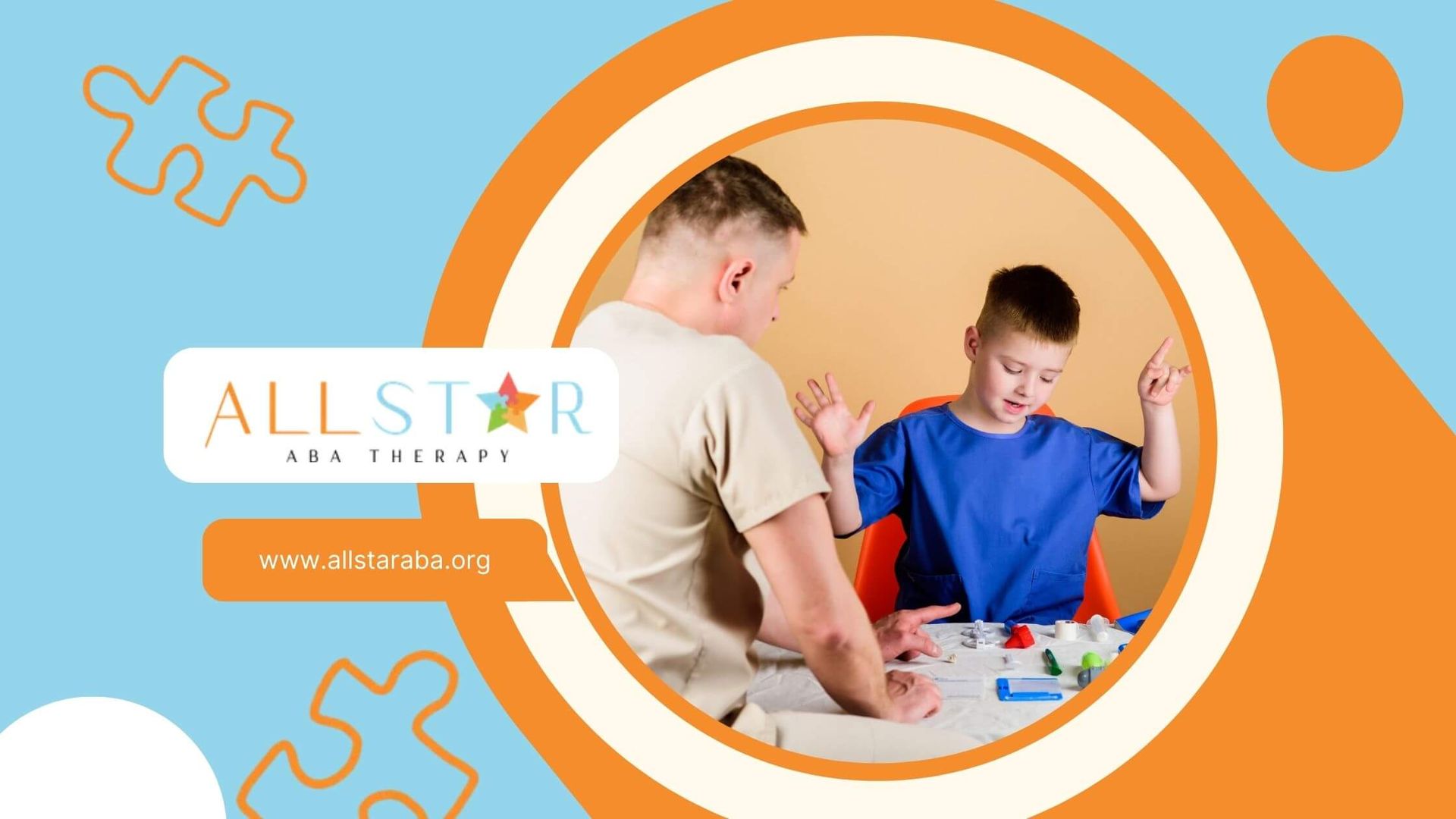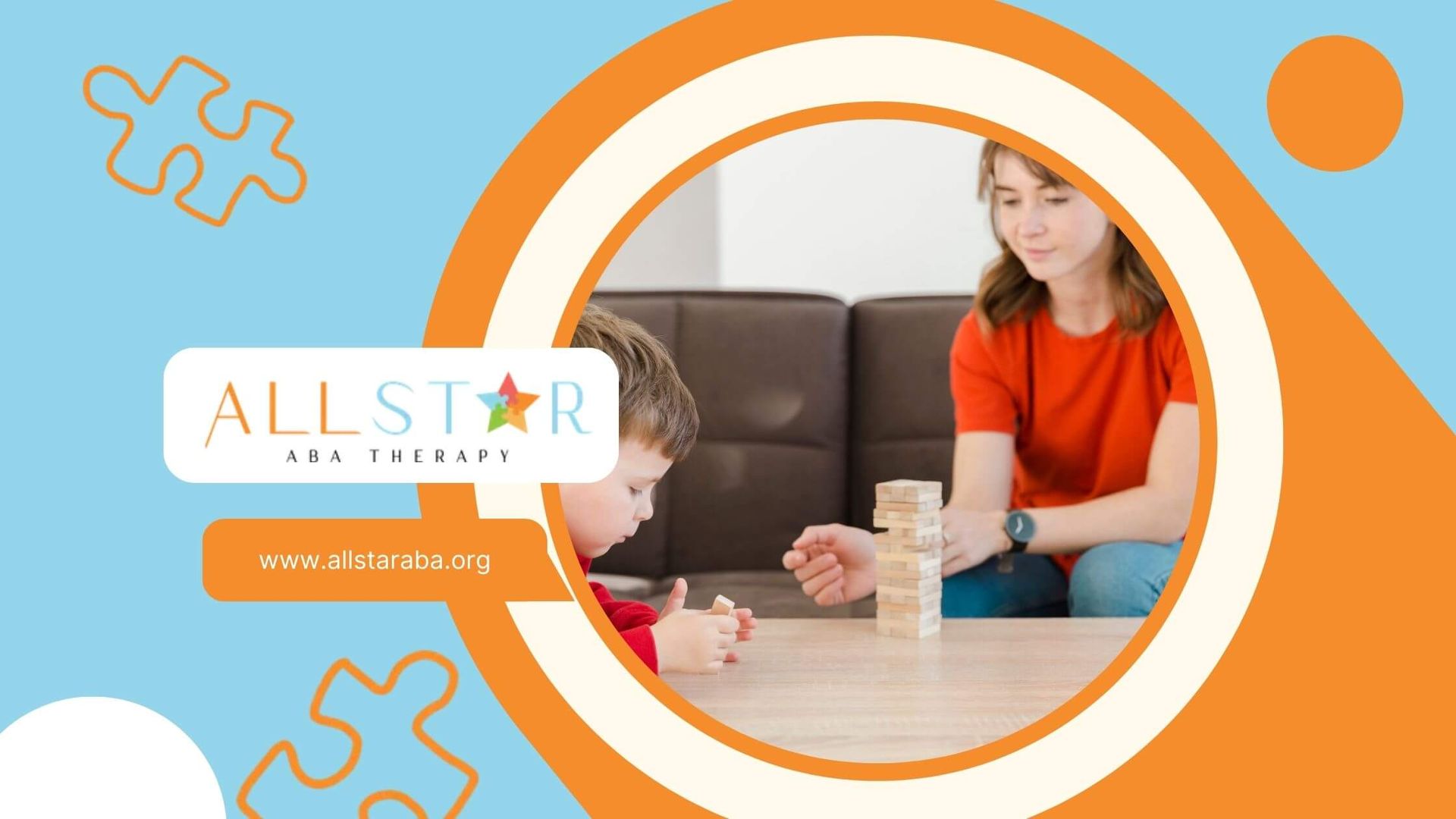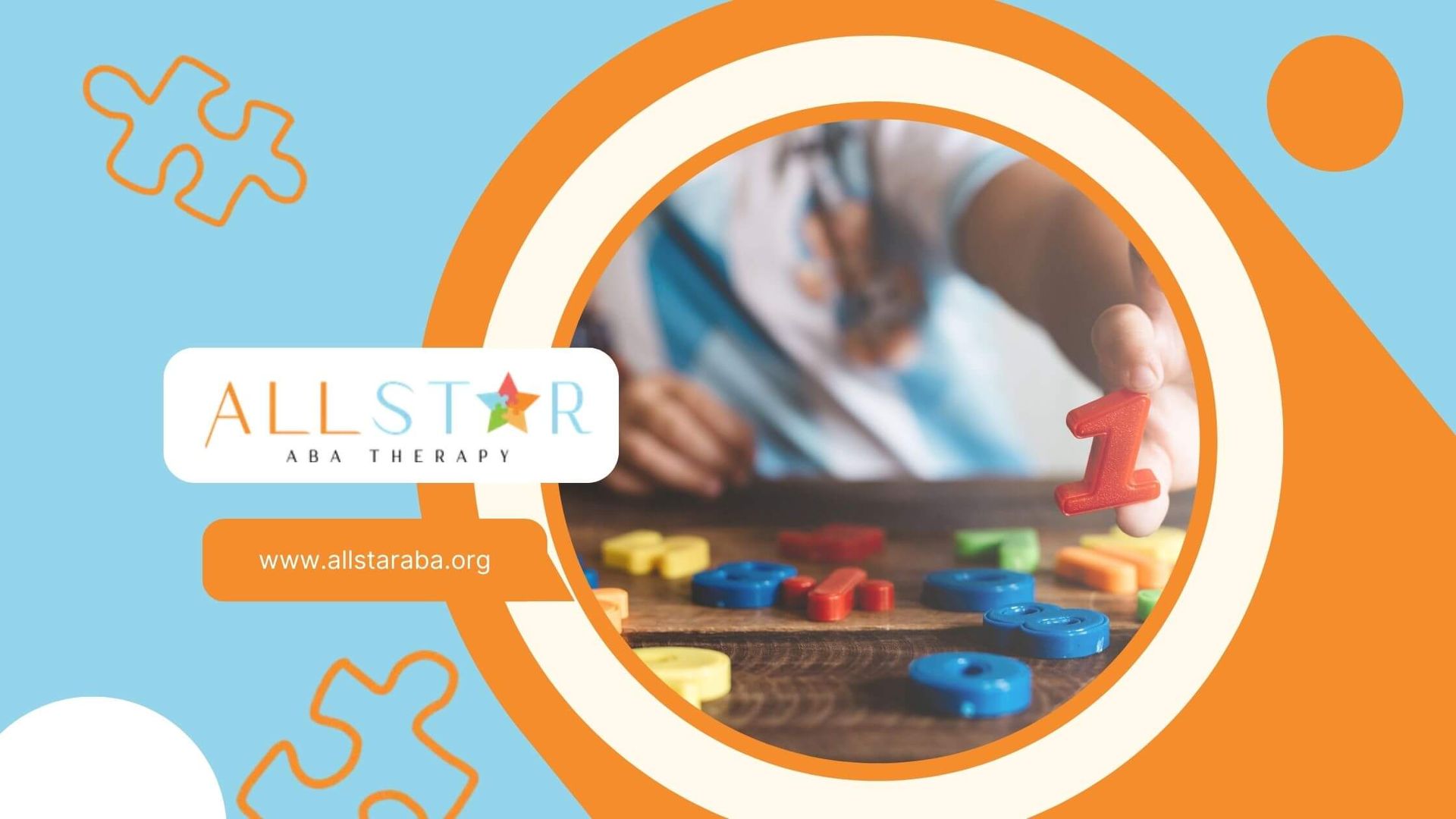New Paragraph
RBT Passing Score Explained: All You Need to Know
The field of Applied Behavior Analysis (ABA) has experienced significant growth in recent years, and with it, the demand for Registered Behavior Technicians (RBTs) has also increased. RBTs play a crucial role in providing direct therapy to individuals with autism and other neurodevelopmental differences, helping them acquire new skills and reduce problem behaviors that impede their learning.
To become a certified RBT, individuals must go through a rigorous certification process established by the Behavior Analyst Certification Board (BACB). This process includes completing a 40-hour training program, passing an RBT competency assessment, and finally, taking and passing the RBT exam.
One important aspect of the RBT exam is the passing score, which determines whether a candidate has met the standard of competency required to become a certified RBT. In this blog, we will explore the RBT passing score in detail, including how it is calculated and what constitutes a passing score. Understanding the passing score is essential for aspiring RBTs to prepare effectively for the exam and increase their chances of success.
Understanding the RBT Certification Process
Before diving into the specifics of the RBT passing score, it is important to have a clear understanding of the overall RBT certification process. The RBT certification process is designed to ensure that individuals possess the necessary skills and competencies to work as behavior technicians.
To become a certified RBT, individuals must complete a 40-hour training program that covers the RBT task list, which outlines the skills and knowledge required for the behavior technician role. This training program is usually provided by a behavior analyst or a qualified trainer.
Once the training program is completed, individuals must pass an RBT competency assessment, which evaluates their ability to apply the knowledge learned in the training program to real-life situations. The competency assessment is typically conducted by a behavior analyst and may involve working with a client or role-playing scenarios.
After successfully completing the competency assessment, individuals can then apply for RBT certification through the Behavior Analyst Certification Board (BACB). The certification application process involves submitting the necessary documentation, including proof of completion of the training program and the competency assessment.
Once the application is approved, individuals can schedule and take the RBT exam, which is the final step in the certification process. The passing score on the RBT exam determines whether an individual is eligible for certification as a Registered Behavior Technician.
Overview of RBT Certification Requirements
Becoming a certified RBT requires meeting certain requirements set by the Behavior Analyst Certification Board (BACB). These requirements ensure that individuals possess the necessary knowledge and skills to provide effective therapy as behavior technicians.
To be eligible for RBT certification, individuals must complete a 40-hour training program that covers the RBT task list, which includes essential skills and knowledge required for the behavior technician role. This training program is typically provided by a behavior analyst or a qualified trainer.
In addition to the training program, individuals must also pass an RBT competency assessment, which evaluates their ability to apply the knowledge learned in the training program to real-life situations. The competency assessment is conducted by a behavior analyst and may involve working with a client or role-playing scenarios.
Once the training program and competency assessment are successfully completed, individuals can apply for RBT certification through the Behavior Analyst Certification Board (BACB). The certification application involves submitting the necessary documentation, including proof of completion of the training program and the competency assessment.
Upon approval of the certification application, individuals can schedule and take the RBT exam, which assesses their understanding and application of the skills necessary for the behavior technician role. The passing score on the RBT exam determines whether an individual is eligible for certification as a Registered Behavior Technician.
Steps to Becoming a Certified RBT
Becoming a certified Registered Behavior Technician (RBT) involves several steps that individuals must follow to ensure they meet the requirements set by the Behavior Analyst Certification Board (BACB). These steps are designed to ensure that individuals possess the necessary skills and competencies to provide effective therapy as behavior technicians.
The first step in becoming a certified RBT is to complete a 40-hour training program that covers the RBT task list, which outlines the skills and knowledge required for the behavior technician role. This training program is typically provided by a behavior analyst or a qualified trainer and can be completed either in-person or online.
After completing the training program, individuals must pass an RBT competency assessment. This assessment evaluates their ability to apply the knowledge learned in the training program to real-life situations. It is typically conducted by a behavior analyst and may involve working with a client or role-playing scenarios.
Once the competency assessment is successfully completed, individuals can apply for RBT certification through the Behavior Analyst Certification Board (BACB). The certification application involves submitting the necessary documentation, including proof of completion of the training program and the competency assessment.
Upon approval of the certification application, individuals can schedule and take the RBT exam, which assesses their understanding and application of the skills necessary for the behavior technician role. The passing score on the RBT exam determines whether an individual is eligible for certification as a Registered Behavior Technician.
The RBT Exam: A Comprehensive Breakdown
The RBT exam is the final step in the certification process for those aspiring to become Registered Behavior Technicians (RBTs). Administered by the Behavior Analyst Certification Board (BACB), the exam is designed to assess a candidate's understanding and application of the skills necessary for the behavior technician role.
The RBT exam is a comprehensive assessment that covers various content areas, including skill acquisition, behavior reduction, professionalism, measurement, documentation and reporting, and assessment. It consists of 85 multiple-choice questions, of which 75 are scored and 10 are unscored trial questions. The exam has a time limit of 90 minutes.
The RBT exam is administered by Pearson VUE, a global leader in computer-based testing. Candidates can schedule their exam at a Pearson VUE testing center. It is important to note that the exam must be taken in person and cannot be taken online.
During the exam, candidates are expected to demonstrate their knowledge and understanding of the RBT task list and their ability to apply that knowledge to real-life situations. They are also evaluated on their professionalism and adherence to the BACB's ethical guidelines.
Format and Structure of the RBT Exam
The RBT exam follows a specific format and structure to ensure a standardized assessment of a candidate's knowledge and skills as a behavior technician.
The exam consists of 85 multiple-choice questions, of which 75 are scored and 10 are unscored trial questions. The questions are designed to assess a candidate's understanding and application of the skills outlined in the RBT task list. Each question has four possible answer choices, and candidates must select the most appropriate answer.
The passing score for the RBT exam is determined using the modified Angoff method, a standardized approach to setting the passing score for exams. This method involves a panel of experts who review each question and determine the minimum level of competency required to answer it correctly.
Candidates can schedule their RBT exam through their Pearson VUE account. It is important to note that the exam must be taken in person at a Pearson VUE testing center. Candidates are advised to arrive early and bring a valid form of identification.
It is worth mentioning that candidates have multiple attempts to pass the RBT exam. However, each attempt requires a separate scheduling and payment of the exam fee. It is recommended that candidates adequately prepare for the exam to increase their chances of passing on their first attempt.
Key Areas Covered in the RBT Exam
The RBT exam covers various key areas that are essential for a behavior technician to understand and apply in their role. These areas are based on the RBT task list, which outlines the skills and knowledge required for the behavior technician role. Here are some key areas covered in the RBT exam:
- Skill acquisition: Candidates are tested on their understanding of the principles and techniques used in teaching new skills to individuals. This includes topics such as discrete trial teaching, naturalistic teaching, chaining, shaping, prompting, and token systems.
- Behavior reduction: Candidates are evaluated on their knowledge of behavior reduction strategies and techniques. This includes topics such as identifying the functions of behavior, implementing behavior interventions, and collecting data on behavior.
- Professionalism: Candidates are assessed on their understanding of professional conduct and ethical guidelines. This includes topics such as maintaining client dignity, establishing professional boundaries, and following supervision requirements.
- Measurement: Candidates are tested on their ability to collect and analyze data on behavior. This includes topics such as continuous and discontinuous measurement and data collection methods.
- Documentation and reporting: Candidates are evaluated on their understanding of documenting and reporting client progress. This includes topics such as session notes, clinical direction, and complying with legal and ethical regulations.
Decoding the RBT Passing Score
The passing score on the RBT exam is a crucial factor in determining whether a candidate is eligible for certification as a Registered Behavior Technician. The passing score is set by the Behavior Analyst Certification Board (BACB) using a standardized approach called the modified Angoff method.
The modified Angoff method involves a panel of experts who review each question on the exam and determine the minimum level of competency required to answer it correctly. The passing score is then set based on these expert judgments.
To pass the RBT exam, candidates must answer all questions correctly and meet the passing score criteria set by the BACB. It is important for candidates to thoroughly prepare for the exam and allocate enough time for studying and practicing the necessary skills.
What Constitutes a Passing Score
A passing score on the RBT exam is determined by the Behavior Analyst Certification Board (BACB) using the modified Angoff method. The passing score represents the minimum level of competency required for a candidate to be considered eligible for certification as a Registered Behavior Technician.
The modified Angoff method involves a panel of experts who review each question on the exam and determine the minimum level of competency required to answer it correctly. The passing score is set based on the expert judgments of the panel.
Candidates must meet or exceed the passing score criteria set by the BACB in order to pass the RBT exam. It is important for candidates to thoroughly prepare for the exam and ensure they have a strong understanding of the skills and knowledge outlined in the RBT task list.
How the RBT Passing Score is Calculated
The passing score on the RBT exam is determined using the modified Angoff method, a standardized approach employed by the Behavior Analyst Certification Board (BACB). The modified Angoff method involves a panel of experts who review each question on the exam and determine the minimum level of competency required to answer it correctly.
To calculate the passing score, the panel of experts goes through a process that includes the following steps:
- Each expert independently reviews each question on the exam and estimates the percentage of minimally competent candidates who would answer the question correctly.
- The experts then come together to discuss their estimates and reach a consensus on the passing score for each question.
- The passing score for each question is determined by averaging the estimates provided by the panel of experts.
- The passing score for the entire exam is calculated by summing the passing scores for each question and dividing by the total number of questions.
The passing score is set to ensure that candidates have demonstrated a sufficient level of competency in the skills and knowledge required for the behavior technician role.
Preparing for Success in the RBT Exam
Preparing for the RBT exam is crucial to increase the chances of success. Here are some tips to help aspiring RBTs prepare effectively for the exam:
- Allocate enough time for studying and review the RBT task list thoroughly. Understand the key concepts and principles outlined in the task list.
- Practice using RBT practice exams to familiarize yourself with the exam format and types of questions. This will help you assess your knowledge and identify areas that require further study.
- Use
study guides and flashcards to review important concepts and terms. This will help you reinforce your understanding and improve retention of information.
- Seek additional resources such as online courses, webinars, or workshops to supplement your study efforts. These resources can provide additional explanations and examples to enhance your understanding.
- Focus on areas where you feel less confident and allocate more study time to these areas. This will help you strengthen your knowledge and skills in those specific areas.
By following these tips and investing time in thorough preparation, aspiring RBTs can increase their chances of success in the exam.
Study Strategies and Tips
To effectively prepare for the RBT exam, it is important to develop a study plan and implement effective study strategies. Here are some study strategies and tips to help aspiring RBTs succeed:
- Create a study schedule and allocate specific time slots for studying each day. Consistency is key, so make sure to stick to your study schedule.
- Use study guides and flashcards to review important concepts and terms. These resources can help you reinforce your understanding and improve retention of information.
- Take advantage of RBT exam practice tests and quizzes to assess your knowledge and identify areas that require further study. This will help you familiarize yourself with the exam format and types of questions.
- Practice active learning by engaging in discussions, teaching concepts to others, or explaining concepts in your own words. This will help reinforce your understanding and improve retention.
- Give yourself enough time to study and avoid cramming. Start studying well in advance so you have enough time to cover all the necessary material and review it thoroughly.
By implementing these study strategies and tips, aspiring RBTs can maximize their chances of success in the exam.
Recommended Resources for RBT Exam Preparation
When preparing for the RBT exam, it is helpful to utilize various resources that can enhance your understanding and knowledge. Here are some recommended resources for RBT exam preparation:
- RBT practice exams:
These practice exams simulate the actual exam format and help you assess your knowledge and identify areas that require further study. They provide valuable practice and familiarize you with the types of questions you may encounter in the exam.
- Study guides: Study guides provide comprehensive coverage of the RBT task list and break down key concepts and principles in an easy-to-understand manner. They serve as a valuable resource for review and reinforcement of important topics.
- Online resources: The Behavior Analyst Certification Board (BACB) website provides valuable information and resources for exam preparation. They offer study guides, sample questions, and other materials to help candidates prepare effectively.
- Assistant assessor: If available, working with an assistant assessor can be beneficial. They can provide guidance, answer questions, and offer additional support during the preparation process.
By utilizing these recommended resources, aspiring RBTs can enhance their exam preparation and increase their chances of success.
Practice Tests and Their Importance
Practice exams play a crucial role in preparing for the RBT exam and are an integral part of an effective study plan. Here are some reasons why practice tests are important:
- Assess knowledge and readiness: Practice exams allow aspiring RBTs to assess their knowledge and readiness for the actual exam. They provide an opportunity to gauge understanding of the concepts and identify areas that require further study.
- Familiarize with the exam format: Practice exams simulate the format and structure of the actual RBT exam. By taking practice exams, candidates become familiar with the types of questions they may encounter, the time constraints, and the overall exam experience.
- Build confidence: Taking practice exams helps build confidence and reduces test anxiety. By becoming familiar with the exam format and successfully answering practice questions, candidates gain confidence in their abilities and feel more prepared for the actual exam.
- Reinforce learning: Practice exams reinforce learning and help retain information. By actively engaging in practice tests, candidates reinforce their understanding of key concepts and principles, improving retention and recall during the actual exam.
By incorporating practice exams into their study plan, aspiring RBTs can enhance their preparation and increase their chances of success on their first try.
Common Challenges and How to Overcome Them
Preparing for and taking the RBT exam can be challenging for many candidates. Here are some common challenges and strategies to overcome them:
- Time management:
Effective time management is crucial for effective exam preparation. Create a study schedule, prioritize topics, and allocate specific time slots for studying each day.
- Exam anxiety:
Test anxiety is common but can be managed with strategies such as deep breathing exercises, positive self-talk, and visualizing success. Practice relaxation techniques to reduce anxiety before and during the exam.
- First attempt pressure: Feeling pressured to pass on the first attempt can add stress. Remember that you have multiple opportunities to retake the exam if needed. Focus on thorough preparation rather than the pressure of passing.
- Retake preparation: If you need to retake the exam, evaluate your performance in the previous attempt, identify areas for improvement, and adjust your study plan accordingly. Utilize additional resources and seek guidance from an assistant assessor if available.
By addressing these common challenges and implementing effective strategies, aspiring RBTs can overcome obstacles and increase their chances of success.
Time Management During the Exam
Time management is crucial during the RBT exam to ensure that all questions are answered within the allotted time. Here are some tips for effective time management during the exam:
- Familiarize yourself with the exam format and structure before the exam day. Understand the number of questions, time limit, and overall structure of the exam.
- Read each question carefully but avoid spending too much time on one question. If you are unsure about an answer, make a note and come back to it later if time allows.
- Pace yourself and allocate time for each question. This will help you stay on track and ensure that you have enough time to answer all questions.
- Stay focused and avoid unnecessary distractions during the exam. Minimize interruptions and maintain concentration to maximize your efficiency.
- Regularly check the time remaining to assess your progress and make any necessary adjustments to your pace.
By practicing effective time management during the exam, aspiring RBTs can ensure that they are able to answer all questions within the allotted time and maximize their chances of success on their first attempt.
Dealing with Exam Anxiety
Exam anxiety is a common challenge that many candidates face. Here are some strategies to help manage and reduce exam anxiety:
- Prepare adequately:
Thorough preparation is essential for building confidence and reducing anxiety. Review the RBT task list, practice with sample questions, and seek guidance from a BCBA or supervisor if needed.
- Practice relaxation techniques: Deep breathing exercises, meditation, and progressive muscle relaxation can help calm the mind and reduce anxiety. Practice these techniques regularly to build resilience and manage stress.
- Positive self-talk: Replace negative thoughts with positive affirmations. Remind yourself of your capabilities and past successes. Visualize yourself successfully completing the exam and achieving your goals.
- Seek support: Reach out to peers, mentors, or a support network for encouragement and advice. Discussing your concerns with others can help alleviate anxiety and provide valuable insights.
- Take care of yourself: Prioritize self-care, including getting enough sleep, eating nutritious meals, and engaging in physical activity. Taking care of your physical and emotional well-being can help manage anxiety.
By implementing these strategies, aspiring RBTs can effectively manage exam anxiety and perform at their best on their first attempt.
After the RBT Exam: Next Steps
After completing the RBT exam, candidates have several next steps to take. Here are some important considerations:
- Submit certification application: Once the exam is completed, candidates must submit an RBT certification application to the Behavior Analyst Certification Board (BACB). This application includes the necessary documentation, such as proof of completion of the training program and the competency assessment.
- Await certification decision:
The BACB will review the certification application and make a decision regarding certification. Candidates will be notified of the outcome, which may include certification as a Registered Behavior Technician or additional steps required for certification.
- Maintain proficiency and competence: After becoming a certified RBT, it is important to maintain proficiency and competence by staying up-to-date with the latest research and best practices in the field of applied behavior analysis. Continuing education and professional development opportunities can help support ongoing growth and learning.
- Retaking the exam: If a candidate does not pass the exam on their first attempt, they have the option to retake the exam. Candidates should review their performance, identify areas for improvement, and adjust their study plan accordingly before retaking the exam.
By completing these next steps, aspiring RBTs can progress in their certification journey and continue their professional development in the field of applied behavior analysis.
Understanding Your Score Report
Upon receiving the score report for the RBT exam, it is important to understand the information provided. Here are some key points to consider when reviewing your score report:
- Passing score: The score report will indicate whether you have achieved the passing score required for certification as a Registered Behavior Technician (RBT). The passing score is determined using the modified Angoff method by the Behavior Analyst Certification Board (BACB).
- Certification eligibility: If you have achieved the passing score, you are eligible for RBT certification. The score report serves as confirmation of your eligibility.
- Proficiency levels: The score report may also provide information on your proficiency levels in different content areas. This can help you identify areas of strength and areas that may require additional focus for professional development.
- Additional steps: If you did not achieve the passing score, the score report may provide guidance on retaking the exam or additional steps required for certification. Review this information carefully and consider adjusting your study plan accordingly.
By understanding your score report, you can assess your performance, identify areas for improvement, and make informed decisions regarding your certification journey.
What to Do If You Don’t Pass on the First Try
If you do not pass the RBT exam on your first attempt, it is important not to get discouraged. Here are some steps to take if you don't pass on the first try:
- Review your performance: Carefully review your score report and assess your performance in different content areas. Identify areas that may require additional study and adjustment in your preparation.
- Adjust your study plan:
Modify your study plan based on the areas that require improvement. Allocate more time and resources to those areas and seek additional guidance if needed.
- Retake the exam:
Schedule a retake of the RBT exam once you feel adequately prepared. Be sure to allow enough time for additional study and review before retaking the exam.
- Seek support and guidance: Reach out to a BCBA or supervisor for guidance and support. They can provide valuable insights, resources, and advice to help you succeed in your retake.
- Consider additional supervision or competency assessment: If needed, consider seeking additional supervision or undertaking a competency assessment to further enhance your skills and knowledge.
By taking these steps, you can overcome the initial setback and increase your chances of passing the exam on subsequent attempts.
Conclusion
In wrapping up, understanding the RBT passing score is crucial for success in the certification process. By knowing what constitutes a passing score and how it's calculated, you can better prepare and increase your chances of passing the exam. Remember to utilize study strategies, recommended resources, and practice tests to enhance your readiness. Overcoming common challenges like time management and exam anxiety will also contribute to your success. After the exam, make sure to review your score report and follow the necessary steps if you don't pass on your first attempt. With dedication and thorough preparation, you can achieve your goal of becoming a certified RBT.
Need Support?
We're Here to Help!
Our experienced team is ready to assist you. Reach out today to discuss how we can support your child's development and well-being.
Get started with expert ABA therapy today.








